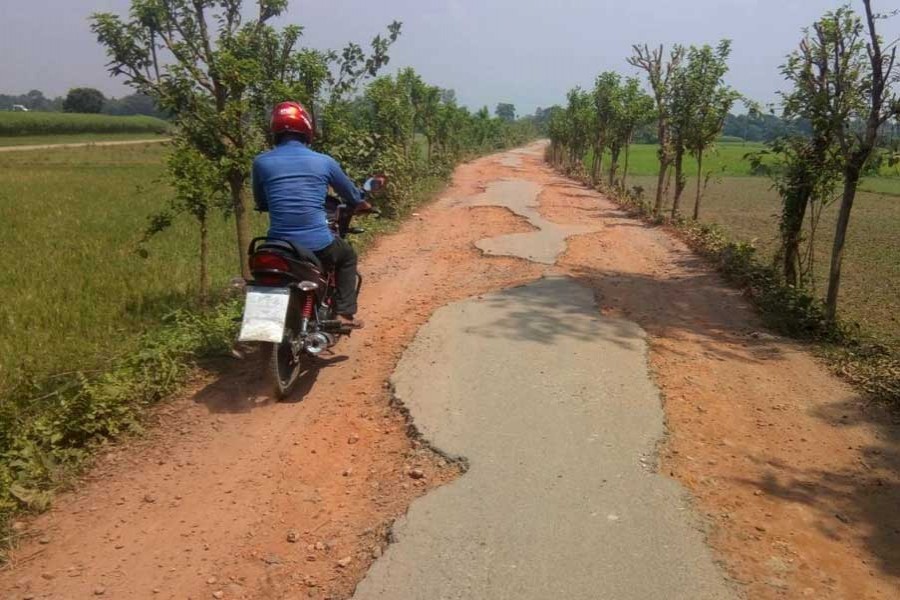Bangladesh has seen few such sprees of building bridges across rivers in the past years like that witnessed in the recent times. Being a river-filled land, the country has for centuries been in need of river-bridges. As railway was the only mode of transport to travel between long and mid-distance destinations, the then eastern Bengal got its Hardinge Bridge across the Padma (March, 1915), and the King George VI Bridge across the Meghna (December, 1937). These mega railway bridges have been overshadowed by the Padma Multipurpose Bridge connecting the country's eastern and southwestern regions. It was opened by Prime Minister Sheikh Hasina on June 25, 2022.The 6.15 km Padma Bridge has revolutionised the previously ferry-based crossing of the mighty Padma. In place of 7 to 8 hours, it now takes only three hours in travels between Dhaka and different areas in the country's southwestern parts. With the rapid rise in economic activities and the need for enhanced connectivity in the 21st century, the Padma Bridge is set to play a highly critical role in the all-round development of Bangladesh.
After the opening of two more road-bridges across as many wide rivers this month, the year 2022 might be termed a grand year for cross-region connectivity in Bangladesh. Besides the urban roads, multi-lane highways and spectacular flyovers continue to be built in the capital connecting the adjoining areas. History is expected to view this saga of enhancing road and rail connectivity as a watershed for the nation in the future.
At this point a lot of people might come up to raise a highly relevant issue: the plight of communication network in villages. Many would love to call it rural connectivity. The right answer encompasses a lot of issues. Of them, the most relevant one is the utter neglect the rural communication network and its proper operation have been receiving for ages. Given the unabatedly deteriorating situation, many village-based educated quarters are prone to dismiss any discourse on rural connectivity as sheer wastage of time. The present boat and bullock cart-based transport has been integral to village communication for centuries. It's the ferrying people and trading of goods across rivers that existed in the land prior to the times of bridges. Whereas the people now travel from the one side of a river to another by using steel-and-concrete bridges, the rural people remain stuck in the ancient communication means. To speak without mincing words, the concept of connectivity and the rural people's right to enjoy this privilege in the vast rural expanse of Bangladesh sounds now like oxymoron.
The rural multitude has no choice. Upon being made to get used to traversing distances on foot, by riding horses, or on country boats, they cannot think of any other options, i.e.mechanised water or land transports. It's only in the early 20th century that areas near river ports have started to have glimpses of motor launches. It was only after overcoming the fear of travelling by an engine-run big boat with sitting arrangements, did the smart and bold segments of people got used to launch travels. The launch routes remained operative in the small radius of a river. Many outlying riverside villagers still make do their river travels by large 'goyna' ferry boats, braving nor'westers or the frightening monsoon rivers. Over the last 2/3 decades, so-called passenger trawlers are seen ferrying people between destinations. According to rural development experts, the villages do not deserve these hazardous modes of travel.
What seems incredible is the provisions of river bridges in the relatively neglected areas are being overlooked. In the country of 148,460 square kilometres,with over 700 small and large rivers, the number of bridges is terribly inadequate. The very mention of Bangladesh brings to the mind of the people overseas its innumerable rivers. Unfortunately, the greater part of the country has yet to be considered eligible for bridges. In consideration of importance in the areas of trade and mass needs, the northern and northeastern, and even the southern, regions of Bangladesh stand out as being neglected. To add salt to the wound, the regions have long been veritably disconnected from each other. Thanks to the newly built Padma and a few other major bridges, the regions' people can heave a sigh of relief. The width and monsoon navigability of the rivers expedited the fulfilment of the dreams living in the areas. Ensuring easy connectivity between places across the country couldn't have been a daunting taskhad the policymakers made an in-depth assessment of the gains coming from the river-based communications.
The easy land transport-based communication far from river routes in villages finally ends up being a surface connectivity. There are vast areas in the country where rivers appear in dreams only. Road connectivity is the backbone of trade and commerce, as well as conventional travel, in those areas. But dilapidated makeshift bridges, popularly called 'sanko', across dying rivers or canals, stand out as great impediments. The dream of putting in place a smooth communication means, thus, turns into a pipedream.
As the rural development strategists view it, hundreds of villages in Bangladesh are dying out economically and socially due to the absence of easy communication meant for the rural people. Given this unpalatable truth, villagers find themselves in the midst of a clumsy and haphazard state. It blocks all paths to rural progress and the people's wellbeing.To speak acerbically, the people in the Bangladesh villages have been the victims of an inadequate communication infrastructure. The paths to village connectivity invariably get lost in a maze of elusive promises. As a corollary, it's the rural folks who keep suffering.


